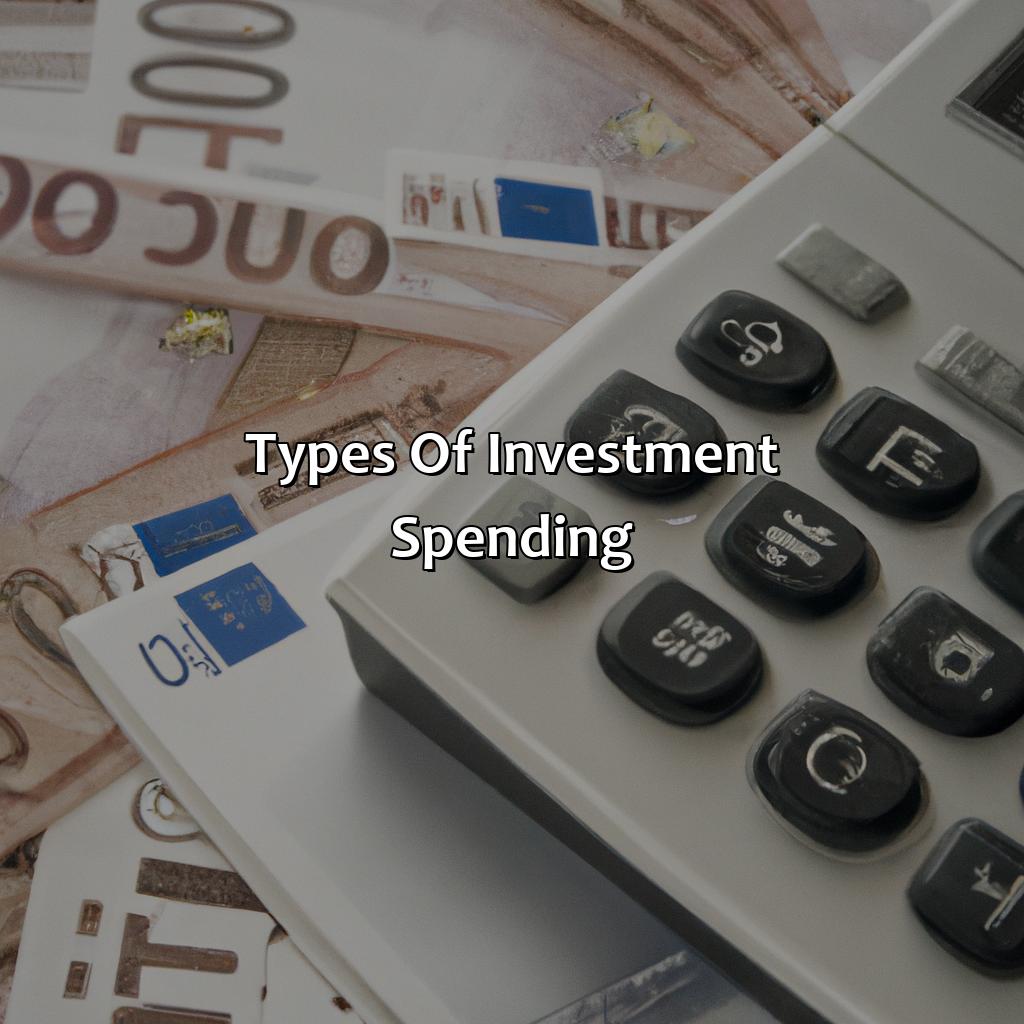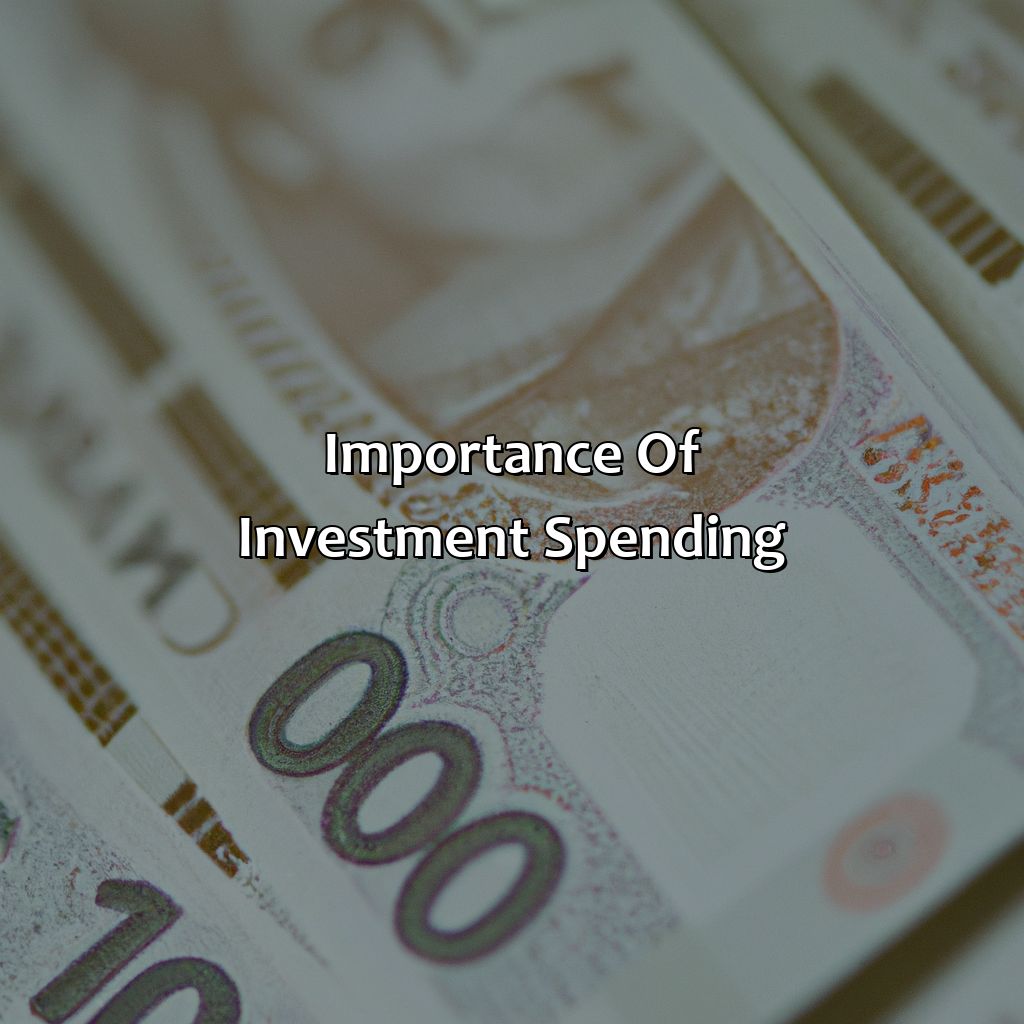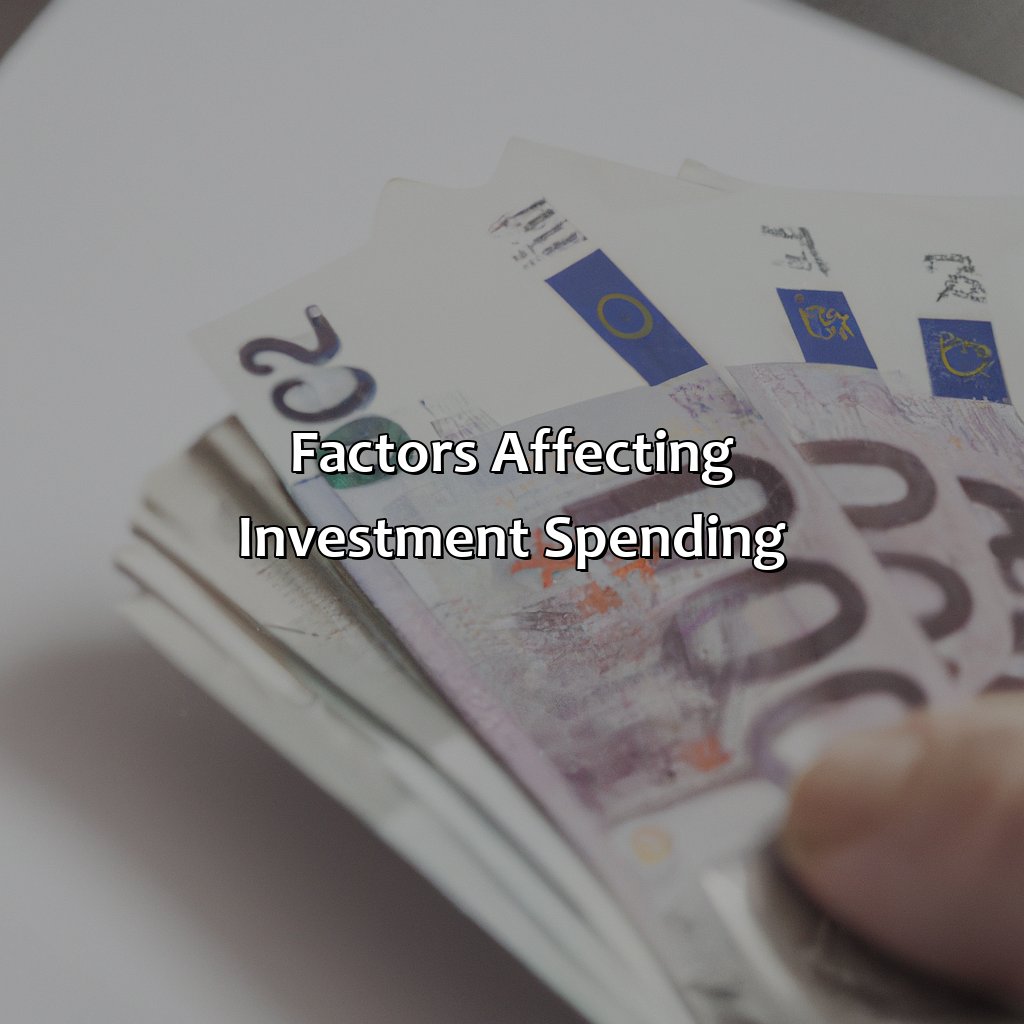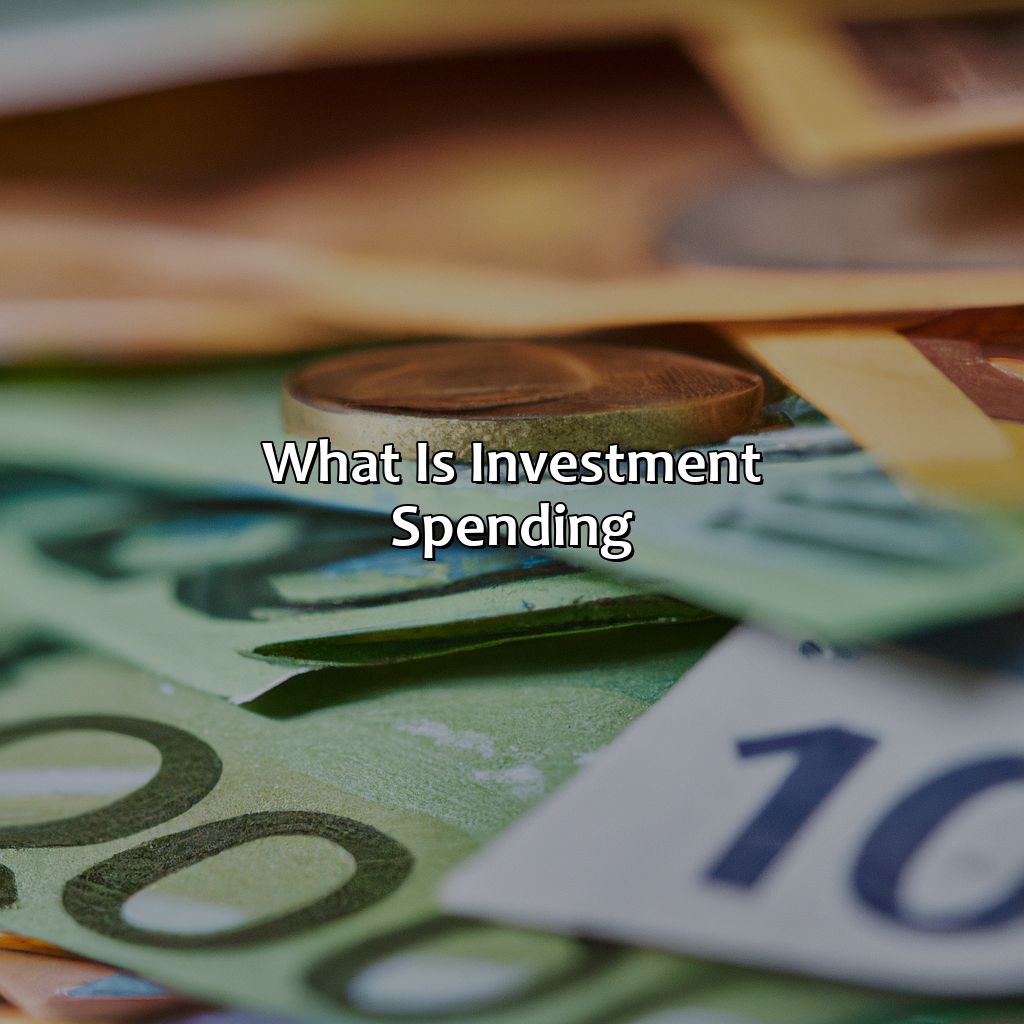What Is Investment Spending?
Key Takeaway:
- Investment spending refers to the acquisition of physical or financial assets with the aim of generating income or appreciation in value over time. It is a crucial component of economic growth and development.
- The two types of investment spending are physical investments and financial investments. Physical investments include construction of new factories, purchase of machinery and equipment, while financial investments involve the purchase of stocks, bonds, and other securities.
- Investment spending contributes to economic growth by stimulating demand, creating employment opportunities, and increasing productivity. Higher levels of investment spending can result in higher standards of living for individuals and nations.
Are you unsure what investment spending is and how it affects your financial future? This article will provide an overview of investment spending and why it is important for personal financial growth. You will learn how to make wise decisions with your finances and how to plan for a secure financial future.
Types of investment spending
Investment spending has two forms. Physical and financial. Let’s explore each one. What are the advantages and disadvantages? How do they differ from each other? Discover the answers here!

Image credits: retiregenz.com by Yuval Jones
Physical Investments
Investing in physical assets like property, machinery, or equipment is known as Tangible Investments. These investments are considered as long-term and can generate income for individuals or companies. Physical investments can also be made in infrastructure or building construction projects. Such investing is considered as a safe alternative, compared to other forms of investment because of the low probability of depreciation.
Furthermore, Tangible Investment serves as a hedge against inflation because when the inflation rate rises, the value of these assets also increases. Additionally, Tangible Investments act as collateral for loans that would otherwise not have been granted to investors who lack regular incomes.
In addition, some investors invest in artwork and antiques, which they believe can appreciate over time and provide returns on investment once they sell the pieces. Physical investments involve more than just acquiring assets; there may be repair work or maintenance required throughout ownership of such properties.
Last but not the least, it’s important to note that investing in tangible assets requires an individual who understands how different market dynamics will affect their investments. One example of this would be during natural disasters and floods that can cause property and asset damage resulting in expensive repairs for the investor.
Investing requires attention to detail, proper planning and execution strategy but when done right purposefully brings great rewards.
Putting all your money in one stock is like playing Russian roulette with your finances – except there’s no adrenaline rush, only regret.
Financial Investments
Investment spends are crucial for financial gains, profits, and stability. In today’s dynamic world, financial investments are a necessity to secure your future and must not be taken in haste. The term investment spending refers to outlaying funds on assets to generate income or profits over a period.
There are different types of investment spending such as residential property, commercial property, shares, bonds, mutual funds, and precious metals that offer various returns and risks. A smart investor considers their current financial status before making any investment decision.
For instance, investing in stocks is typically for long-term prospects, whereas property investments provide stabilised interest yields during economically challenging times. Meanwhile, the purchase of gold always protects your wealth from fluctuations in currency values.
However, regardless of type; it’s advisable to perform thorough research and analysis beforehand by consulting a financial advisor or through online sources like stock market analysis reports and historical data that will assist you in making strategically informed financial decisions.
In view of the above, investment spends have had enormous impacts on individuals’ lives globally over the years due to its unpredictable nature susceptible to economic upheavals. One classic example; “The Great Depression” which shook America’s economy where numerous investors lost their entire life savings or went bankrupt after investing in what later turned out as “Bad Investment Spreads”.
Investment spending is like planting a tree – you may not see the benefits right away, but in the long run, it will bear fruitful results.
Importance of investment spending
To grasp the significance of investment spending and its subsections, you must have a vision for the long-term. It is essential to appreciate the effects investment spending has further down the line. Investment spending is the driving force for economic growth and job openings in the future.

Image credits: retiregenz.com by James Arnold
Boosts economic growth
Investment spending is vital for stimulating economic expansion. By investing in business growth, infrastructure, and research and development, resources are allocated to future productivity gains. This leads to a rise in economic output, creating jobs and increasing income levels. The promotion of investment spending is essential to sustain long-term economic growth.
Investment spending can trigger a cyclical process which propels further investment throughout the economy. As businesses grow and expand into new markets, they require additional support from suppliers and service providers. In turn, these enterprises also need additional investments to facilitate expansion. Therefore, any initial investment serves as a catalyst for multiple expansions and job creation across the economy.
To accommodate investment spending, governments need to implement policies that create an enabling environment for private sector participation in infrastructure development projects. Governments should offer tax incentives for investments or provide low-interest financing as forms of public-private partnerships that encourage investments in critical sectors of the economy.
Pro Tip: Sustaining long-term economic growth requires persistent efforts from both policymakers and investors to promote investment spending while ensuring that it aligns with desired outcomes including social justice and environmental sustainability.
Investing in the economy creates job opportunities, which is great news for those of us who want to make money without actually doing any work.
Creates employment opportunities
Investment spending has a significant impact on employment opportunities, leading to increased job creation and reduced unemployment rates. Businesses that invest in new projects, products or technology require more skilled workers, eventually creating job opportunities for the unemployed. As firms increase their investment in machinery, equipment, and research development, they need more blue-collar and white-collar workers to operate these machines or innovate new ideas. Moreover, investment spending stimulates economic growth providing a stable environment for businesses to expand operations and hire more workers without worrying about economic instability.
Several studies have shown that the link between investment spending and employment is unmistakable as increased investments lead to higher employment rates mainly in sectors like manufacturing and construction. In addition to this, increasing foreign direct investments foster domestic productivity, enhance the competitiveness of domestic industries globally and create more jobs across several sectors.
According to the World Investment Report 2020 by United Nations Conference on Trade and Development (UNCTAD), “global foreign direct investment (FDI) collapsed in 2019 falling by 49% from $1.5tn in 2018 to an estimated $845bn”. It shows how significant FDI is globally; hence its decrease leads to minimal job creation opportunities for emerging economies. Hence it curbs potential growth as well.
Why invest in the stock market when you can just invest in a good therapist to help you deal with the emotional rollercoaster of it all?
Factors affecting investment spending
Want to grasp the factors that can sway investment spending?
Think interest rates and consumer confidence. Interest rates might make investors hesitant. But if consumer confidence is high, it could spark investment. This ‘Factors Affecting Investment Spending’ section looks at how interest rates and consumer confidence are instrumental in investment spending.

Image credits: retiregenz.com by Adam Duncun
Interest rates
The cost of borrowing funds from financial institutions is a crucial factor that affects investment spending. The semantic NLP variation of this heading would be ‘Loan interest rates‘. As the interest rates increase, individuals and businesses tend to borrow less as it becomes more expensive to repay the loan. This may lead to lower investment spending as borrowing funds become less attractive.
In addition to the direct impact on loan interest rates, changes in Central bank rates can also affect investment spending due to its effect on the broader macro economy. An increase in central bank rates often leads to an appreciation in currency value; with exports becoming relatively more expensive/import becoming cheaper as foreign investors demand greater return for investing in domestic markets which may result in reduced investment spending.
It is imperative to understand that the impact of loan interest rates varies depending on industry dynamics, competitive forces, profitability levels, growth expectations among other factors.
A notable example where loan interest rates have significantly impacted Investment Spending can be observed during a recessionary period such as the 2008 financial crisis. When a recession strikes banks and other financial institutions while trying to maintain profitability move quickly towards risk aversion resulting in reduced liquidity in capital markets with lending almost at an all-time low.Economic downturns cause consumers and businesses alike towards cutting back their investments resulting in overall economic contraction.
Looks like consumer confidence is like a rollercoaster ride – it goes up and down and makes you feel nauseous.
Consumer confidence
The psychological state of a buyer highly influences the investment spending. The level of trust and hope in the economy is crucial in creating a stable environment for consumers to engage in investing. Delving deeper into this factor, consumer confidence involves analyzing an individual’s opinion about future earnings, job prospects and financial status. When there is optimistic consumer confidence, there tends to be higher investment spending.
Additionally, several factors affect an individual’s perception of the economy – unemployment rate, inflation rate, saving rates and interest rates all contribute significantly. As such, when people have high hopes that things are bound to get better economically, they tend to invest more in long term securities like stocks and bonds.
Notably, since perception is relative it is impossible for everyone to have a positive outlook towards economics leading to varied investment decisions.
For instance in the early 2000s despite high optimistic pressure campaigns by economies globally about the new millennium era’s dawn and with talks of brewing stability on economic fronts due to burgeoning technological leaps world police actions surrounding terrorism clouded any sense of long-term optimism which led to lesser participation from individuals as far as investing was concerned.
Five Facts About Investment Spending:
- ✅ Investment spending is the purchase of goods that are not immediately consumed, but rather used for future production. (Source: Investopedia)
- ✅ Investment spending is a key component of GDP and economic growth. (Source: The Balance)
- ✅ Types of investment spending include business investment in capital goods, residential investment in housing, and investment in inventories. (Source: Wall Street Mojo)
- ✅ Investment spending is influenced by various factors, such as interest rates, technological advancements, and government policies. (Source: Khan Academy)
- ✅ Investment spending can lead to job creation and increased productivity in the long run. (Source: World Bank)
FAQs about What Is Investment Spending?
What is investment spending?
Investment spending is the money spent by businesses and individuals on things like plant and equipment, research and development, and new construction projects that are expected to generate income or profits in the future.
Why is investment spending important for the economy?
Investment spending is important for the economy because it contributes to economic growth and development. When businesses or individuals invest in new projects, it creates jobs, increases productivity, and ultimately leads to higher levels of income and output.
How does investment spending differ from consumption spending?
Investment spending differs from consumption spending because it is not focused on immediate consumption or enjoyment. Instead, investment spending is focused on creating long-term benefits, such as increased profits or productivity, that will pay off in the future.
What are some examples of investment spending?
Examples of investment spending include building a new factory, investing in new technology, purchasing equipment, constructing a new office building, and developing a new product line.
What factors influence investment spending?
Several factors influence investment spending, including economic conditions, interest rates, the level of government regulations, tax policies, and business confidence and expectations.
How can individuals participate in investment spending?
Individuals can participate in investment spending by investing in stocks, bonds, or mutual funds that invest in businesses or projects that are expected to generate income or profit. However, it is important to carefully research and evaluate investments before making any decisions.
